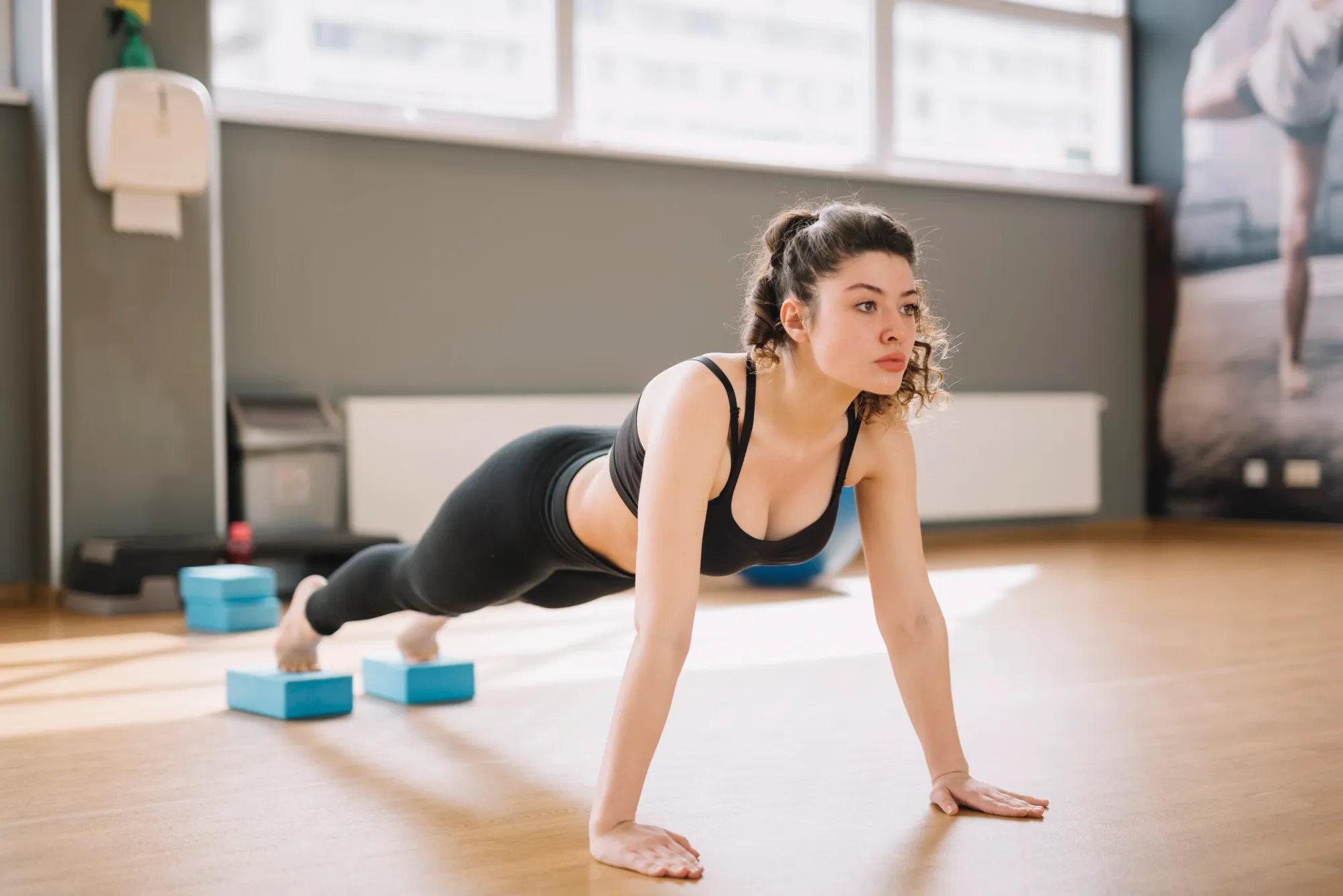The Ultimate Guide to Staying Fit: Simple Exercise and Diet Tips That Actually Work
Introduction
Let me tell you something – staying fit doesn’t have to feel like climbing Mount Everest every single day. I’ve been on this fitness journey for years, and I’ve learned that the best approach is the one you can actually stick with.
You know that feeling when you look in the mirror and think, “I really need to get my act together”? We’ve all been there. The good news is that getting fit and staying that way isn’t about extreme diets or spending three hours at the gym. It’s about finding what works for your life and making small changes that add up to big results.
Today, I want to share the exercise and diet strategies that have helped me (and thousands of others) build lasting fitness habits. These aren’t trendy quick fixes – they’re proven methods that you can start using right away, no matter where you’re starting from.
Best Exercises for Overall Fitness
Strength Training
Don’t worry – strength training doesn’t mean you need to become a bodybuilder. Building muscle helps your body burn more calories even when you’re sitting on the couch watching Netflix.
Bodyweight exercises are perfect for beginners:
Push-ups (start on your knees if regular ones are too tough)
Squats (just like sitting in a chair and standing back up)
Lunges (step forward, lower your back knee, step back)
Planks (hold for 30 seconds to start)
Free weights can be as simple as a pair of dumbbells. You can do bicep curls, shoulder presses, and chest presses right in your living room.
Resistance bands are cheap, portable, and incredibly effective. I travel with mine everywhere because hotel gyms can be hit or miss.
Start with 2-3 strength training sessions per week. Your muscles need time to recover, so don’t work the same muscle groups on consecutive days.
Flexibility and Mobility Work
This is the part most people skip, and I used to be guilty of this too. Stretching and mobility work aren’t just nice-to-haves – they’re essential for preventing injury and helping you move better.
Basic stretching should be done after every workout when your muscles are warm. Hold each stretch for 20-30 seconds. Focus on your hamstrings, calves, chest, and shoulders.
Yoga is incredible for both flexibility and mental health. Even 10 minutes of gentle yoga before bed can improve your sleep quality. There are tons of free videos online for beginners.
Foam rolling might feel uncomfortable at first, but it helps release muscle tension and improve blood flow. Think of it as a massage you give yourself.
I learned the hard way that skipping this stuff leads to tight muscles and eventually injury. Now I spend at least 10 minutes after each workout doing some basic stretches.
Optimal Diet for Maintaining Fitness

Macronutrient Balance
Let’s talk about the building blocks of nutrition without getting too complicated. Your body needs three main types of nutrients, and getting the right balance makes a huge difference in how you feel and perform.
Protein should be the star of most of your meals. It helps build and repair muscle, keeps you feeling full, and requires more energy to digest (which means you burn more calories processing it). Aim for about 0.8 grams per pound of body weight if you’re active.
Good protein sources include:
Chicken, turkey, and lean beef
Fish and seafood
Eggs
Greek yogurt
Beans and lentils
Tofu and tempeh
Carbohydrates aren’t the enemy, despite what some diets might tell you. Your brain and muscles run on glucose, which comes from carbs. The trick is choosing the right ones most of the time.
Focus on:
Whole grains like brown rice, quinoa, and oats
Sweet potatoes and regular potatoes (yes, really!)
Fruits and vegetables
Legumes
Healthy fats are crucial for hormone production and nutrient absorption. They also help you feel satisfied after meals.
Include:
Avocados
Nuts and seeds
Olive oil
Fatty fish like salmon
Coconut oil in moderation

Meal Timing and Frequency
There’s a lot of confusion about when and how often to eat. The truth is, meal timing matters less than most people think, but there are some guidelines that can help you feel your best.
Eating every 3-4 hours helps keep your blood sugar stable and prevents you from getting so hungry that you make poor food choices. I used to skip breakfast and then wonder why I was starving by 11 AM and grabbing whatever was closest.
Pre-workout nutrition doesn’t need to be complicated. If you’re working out in the morning, you might not need anything except some water. For afternoon workouts, a small snack with carbs and a little protein 30-60 minutes before can give you energy.
Post-workout meals should include both protein and carbs within a couple of hours after exercising. This helps your muscles recover and replenishes your energy stores.
Evening eating gets a bad rap, but eating late doesn’t automatically make you gain weight. What matters more is your total calorie intake for the day. That said, heavy meals right before bed can affect your sleep quality.
Hydration Guidelines
Water is probably the most overlooked part of fitness nutrition. I used to think those “drink 8 glasses a day” recommendations were just suggestions until I started paying attention to how much better I felt when properly hydrated.
Daily water intake varies by person, but a good starting point is half your body weight in ounces. So if you weigh 150 pounds, aim for about 75 ounces of water per day. You’ll need more if you’re sweating a lot or live in a hot climate.
Signs of good hydration:
Your urine is pale yellow
You don’t feel thirsty throughout the day
Your energy levels are consistent
Your skin doesn’t feel dry
Hydration timing matters too. Drink water throughout the day rather than chugging a bunch at once. Keep a water bottle with you and take sips regularly.
During workouts longer than an hour or in hot weather, you might need to replace electrolytes. Sports drinks can be helpful here, but you can also add a pinch of salt to your water or eat something salty afterward.
Creating a Sustainable Routine
Weekly Schedule Planning
The best fitness routine is the one you’ll actually follow. I’ve seen too many people (myself included) create elaborate workout schedules that look great on paper but fall apart after two weeks because they’re not realistic.
Start small and build gradually. If you’re new to exercise, maybe that’s three 30-minute sessions per week. If you’re getting back into it after a break, don’t try to jump back to where you left off.
Here’s what a beginner-friendly week might look like:
Monday: 30-minute walk
Tuesday: 20 minutes of bodyweight exercises
Wednesday: Rest or gentle stretching
Thursday: 30-minute bike ride or swim
Friday: 20 minutes of strength training
Saturday: Longer walk or hike
Sunday: Rest day
Mix different types of exercise throughout the week to prevent boredom and work different muscle groups. I learned that doing the same workout every day led to burnout and overuse injuries.
Schedule your workouts like appointments with yourself. Put them in your calendar and treat them as non-negotiable. Morning workouts work best for me because there are fewer distractions, but find what fits your lifestyle.

Long-term Habit Formation
Building lasting fitness habits is like learning to play an instrument – it takes time, practice, and patience with yourself when you hit rough patches.
Start with tiny habits that are almost impossible to fail at. Maybe that’s putting on your workout clothes every day, even if you don’t exercise. Or doing five push-ups every morning. These small actions build momentum.
Connect new habits to existing ones. I brush my teeth every morning, so I started doing a quick stretching routine right after. This linking technique helps the new habit stick.
Plan for obstacles because they will happen. What will you do when it’s raining and you planned to walk outside? When you’re traveling for work? When you’re feeling stressed or tired? Having backup plans prevents one missed day from becoming a week of missed days.
Track your progress in whatever way motivates you. Some people love fitness apps, others prefer a simple notebook. I use my phone to track workouts because it’s always with me, but find what works for you.
Celebrate small wins. Completed a full week of workouts? Treat yourself to something special (not food-related). Hit a new personal record? Share it with someone who cares. These positive reinforcements help maintain motivation.
Common Mistakes to Avoid
I’ve made plenty of mistakes on my fitness journey, and I see others making the same ones. Learning from these can save you time and frustration.
Going too hard, too fast is probably the biggest mistake I see. You get motivated, decide to work out six days a week, eat perfectly, and give up caffeine all at the same time. Your body and mind rebel, and you end up quitting everything. Change one or two things at a time.
Comparing yourself to others is a motivation killer. Social media makes this worse because you only see people’s highlight reels. That person posting their morning workout might have been exercising consistently for years. Focus on your own progress.
All-or-nothing thinking derails more people than lack of willpower. Missing one workout doesn’t mean you’re a failure. Eating pizza doesn’t mean you should give up on healthy eating. Life happens, and flexible thinking helps you get back on track quickly.
Ignoring recovery was my personal downfall for years. I thought more exercise always meant better results. Your body gets stronger during rest periods, not during workouts. Plan rest days and prioritize sleep.
Not enjoying the process makes everything harder than it needs to be. If you hate your current workout routine, try something else. There are hundreds of ways to stay fit – find the ones that feel like play rather than punishment.
Conclusion
Getting fit and staying that way doesn’t require perfect discipline or extreme measures. It requires consistency, patience, and finding approaches that fit your real life.
The best exercise is the one you’ll do regularly. The best diet is the one you can maintain long-term. The best routine is the one that makes you feel strong and energized, not exhausted and deprived.
Start where you are, not where you think you should be. Take one small step today – maybe that’s a 10-minute walk, drinking an extra glass of water, or planning your workouts for the week. Small consistent actions create big changes over time.
Remember, fitness is a journey, not a destination. There will be good days and challenging days. The goal is progress, not perfection. Be kind to yourself along the way, and celebrate every step forward, no matter how small it might seem.
Your future self will thank you for starting today.

